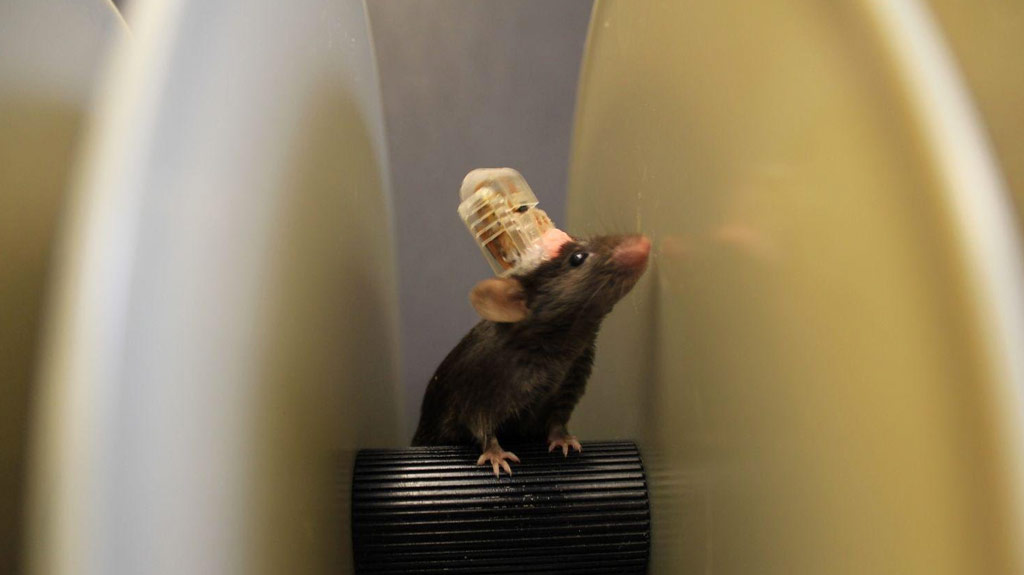
Light on the Brain
One of the main challenges faced in neuroscience research is figuring out a way to force specific groups of neurons to activate for observation. While some drugs and therapies using electricity can be used to fire up neurons, they are very limited in terms of specificity and often require the use of bulky electrodes placed on the scalp of the subject. Not ideal.
Enter optogenetics. This relatively new field combines neuroscience with genetics. In the 1970s, scientists discovered opsins, a type of proteins that were sensitive to light. Neuroscientists then found a way to include these opsins in the genetic code of specific neurons so that the neurons became active when struck by light. Scientists could then engineer test subjects with those modified neurons and control their brain activity using light.
The next part of the process was figuring out how to best deliver the light stimulus to the neurons, which has presented a challenge since you can’t exactly place a lightbulb in the brain. Many solutions have been proposed, from running fiberoptic cables within the brain to implanting LED lights powered wirelessly by radio waves. With each new study, more is learned about how to best harness the potential of his new field of research.

A Brighter Future
Thus far, these experiments have only been conducted on mice and other animals, but from them, we have learned a lot about how our own brains work. We’ve been able to see how distinct parts of the brain function and how they interact with one another. We can fire up the neurons in the amygdala or the hippocampus and watch how it manifests in the actions of the animal, informing our understanding of the brain.
Perhaps one day optogenetics may be used in a human clinical trial. We have been finding ever more advanced ways to map out the brain, but that information would be much more useful if we knew which paths corresponded to which actions or emotions. Eventually, the technology could be used to create medications for any number of neurological disorders. We could find out which specific regions of the brain are active and communicating with one another when a person has symptoms of depression or Alzheimer’s and create drugs that work specifically on those regions.